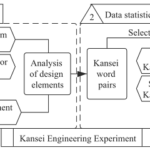
Can you imagine how many products are launched each year? And how many of them succeed? The continuity of any company depends on its ability to stay in the market and face competition through product innovation.
In the United States, as in all countries, tens of thousands of products are launched each year, but very few of them survive market competition. According to Clayton Christensen, a professor at Harvard Business School, 95% of new products launched each year in the U.S. fail.
Statistics show how tough market competition can be and how aggressive it can become. In this context, companies have realized the need to invest in developing new products or improving existing ones.
An important tool for the success of companies is product innovation, whether they are goods or services. Various studies have shown that a company’s innovation capacity positively impacts its competitiveness (Chatterjee et al., 2022).
However, it’s not enough for the product to be innovative; the organization must also be innovative. In this regard, Peter Drucker suggests in his book “Innovation and Entrepreneurship” that product innovation and entrepreneurship are interconnected and should be used together for a business to succeed.
Sorescu (2017) states that companies like Amazon, Google, Facebook, and Netflix, among others, achieved billions of dollars in market capitalization not only through product innovation but also through market penetration or creating new markets using an innovative business model.
In other words, product innovation must go hand in hand with an innovative business model.
In this article, we will explain some definitions, types, processes of product innovation, and examples of innovative products. At the end of the article, you can access a list of bibliographic references that can help you deepen your knowledge to drive product innovation processes.
What is Product Innovation?
Product innovation is the process of creating new products or improving existing ones to meet changing customer needs and outperform competitors. This process involves a series of activities, from identifying new opportunities to developing and launching new products to the market.
The OECD/Eurostat Oslo Manual (2018) indicates that “Product innovation is a new or significantly improved good or service that differs significantly from the company’s previous goods or services and has been introduced to the market.”
The same document highlights that product innovations (goods or services) must provide significant improvements to one or more performance characteristics or specifications. This includes:
- New functions or improvements to existing functions or utility for the user.
- Relevant functionality features: quality, technical specifications, durability, economic efficiency during use, convenience, usability, etc.
- New designs or improvements in design features can influence the appearance of a new product and consequently increase utility for the user.
They may use new knowledge or technologies, or be based on new uses or combinations of existing knowledge or technologies.
In other words, you shouldn’t just focus on having a new product every year; you can also try to improve the features of the products you sell.
Similarly, Stoneman et al (2018) highlight that product innovation can be something new in the world (global level), new in a market (local level), or new to an individual provider (company level).
What should be clear is that product innovation represents a new way to solve a problem for a large number of consumers; in short, it should answer the question “How to create value for customers?
Why is product innovation important?
Today, product innovation is more important than ever. Markets are becoming increasingly global and competitive, and customers have access to a wide variety of products and services. To succeed in this environment, companies need to offer new and innovative products that meet the needs and expectations of customers.
The product (goods or services) is the foundation of a company and the direct link with consumers (Reguia, 2014); for this reason, you must be very careful with the development of goods or services.
Product innovation is important because it can help you create new spaces in a competitive market; by identifying gaps or unmet needs, you can carve out a new space in the market.
Product innovation is also important for economic growth. Companies that innovate create new jobs, generate wealth, and help drive the economy. If your product allows you to differentiate yourself from other companies, you will have the opportunity to grow, expand the business, and generate more profits.
On the other hand, having innovative products also allows positioning your brand compared to that of your competitors. The most outstanding example is iPhone in the mobile phone market.
But how do you measure the contribution of product innovation to your company’s profitability? In order to know if your innovation efforts have results or not. Reguia (2014) indicates that this can be measured by sales and profitability of new goods/services, changes in market share, etc.
Benefits of product innovation
Increase in sales and market share: By offering new and innovative products, companies can attract new customers and retain existing ones.
- Improvement in profitability: Innovative products can have higher profit margins than traditional products.
- Greater competitive advantage: Product innovation can help companies differentiate themselves from the competition and create a barrier to entry for new competitors.
- Improvement in company image: Companies that innovate are seen as leaders in their industry and attract the best talent.
Types of product innovation
The most accepted and known classification of product innovation includes two main types: radical and incremental.
Radical innovation
Radical innovation is the creation of a new product, it is highly risky, and it can change entire categories of a market or even industries.
Incremental innovation
Incremental innovation is the least risky, most frequently practiced, and leads to improvements in existing products.
Product innovation process
At this point, you must be convinced of the importance of innovation, and in particular of product innovation, but how do we start a product innovation process? Below we will provide you with a series of ideas.
It is important to highlight that in recent years, artificial intelligence has emerged as a tool to form hybrid innovation teams with humans for the development of new products.
Product innovation typically originates in the value creation block of a business model (Sorescu, 2017); to identify how the good or service creates value for our customers.
Stoneman et al (2018) defined five routes for product innovations: research and development (R&D), design, creative activities, imitation, and foreign direct investment. Likewise, you must consider emerging technologies (deep tech) in your business field so that they can be part of the plan you are going to develop.
One aspect that must be clear before starting a product innovation process is the possibility of collaborating with different actors external to the company, such as suppliers, customers, competitors, and research organizations, which is also called open innovation. In this regard, Chatterjee et al., (2022) report that knowledge exchange between subsidiaries of a multinational is important for product and process innovation.
Najafi et al (2018) report that their research allowed them to conclude that the level of collaboration with different partners can increase the innovation capabilities of the company, only if the managers of the companies have developed their ability to acquire external knowledge.
Likewise, there are many methodologies to implement a product innovation process. However, first, you must perform a small “audit” of your products, a simple tool is the “Innovation Ambition Matrix”.
Innovation Ambition Matrix
This tool was developed by Bansi Nagji and Geoff Tuff (2012) to help companies measure the “novelty” of their goods or services in the market and facilitate product innovation processes.

The matrix has three types of product offerings:
- Core or central: Considers small changes to existing products with forays into new markets. Efforts at this level focus on incremental innovations; for example, a new packaging, a new formulation, etc.
- Adjacent: Refers to what a company already does well but uses novel solutions to attract new customers. Adjacent innovations allow a company to leverage existing capabilities.
- Transformational: Focuses on creating new offerings to serve new markets. These are the innovations that, when successful, can bring about radical or disruptive changes, for example, iTunes and Starbucks.
Leading companies have a combination of 70% core or central offerings, 20% adjacent, and 10% transformational.
Front-end Development Methodology
In recent years, the use of the “front-end development” methodology, primarily used in software development, has spread across various industries.
The “front-end development” methodology will allow you to identify, validate, and prioritize opportunities before building or redesigning anything. In summary, you will be able to determine the needs of customers that you could address and the best way to do so.
The simplified front-end development process includes five steps:
- Gather ideas based on customer studies and research, employ methodologies such as online surveys, focus groups, in-depth interviews, etc.
- Develop product concepts that fit the needs and preferences of consumers. Additionally, conduct a competitive analysis to ensure that the concepts are within the competitive landscape.
- Validate and prioritize concepts through concept testing as a way to compare and measure your progress against market leaders.
- Assess the market by using a customer segmentation process to form an image of your target customer and determine the concepts or features that could be most profitable.
- Refine the concept by developing a prototype to put it through a formal product development process and incorporate user testing to continue improving.
Using Artificial Intelligence to Develop Innovative Products
Artificial intelligence has become a tool for innovators to develop innovative products. Grech et al. (2023) propose a platform aimed at allowing brainstorming activities to be reimagined as a truly challenging and inspiring activity where participants fully engage in virtual reality environments supported by Artificial Intelligence.
Is Your Product Innovative?
Finally, to consider if your product is innovative, you must be able to answer yes to the following three questions posed by Ghelber (2019):
- Is your product relevant to a significant number of consumers? This especially applies to products that solve problems that have not been solved before.
- Is your product better than that of your competitors? If so, what are the improvements in design, technology, usability, etc.?
- Is the innovation or uniqueness of your product obvious? Is it easy to explain to consumers why your product is necessary or better than its predecessors or competitors? Even when the answer might not always be an easy “yes,” this point is really important for your promotional campaign when you launch the product.
Steps to Create an Innovative Product
In this section of the article, we will answer the question: How to create an innovative product? or How to implement product innovation processes in your company?
Many methodologies can guide you in the creation, development, or updating of an innovative product. In this regard, Lean principles are important when it comes to updating a product or service; however, what process should we implement when we want to develop a completely new product?
To implement a product innovation process, we must take a general look at the expectations of current or potential customers, technological trends, or possible changes in habits and customs.
Almaazmi et al. (2021) and Zheng et al. (2021) report, for example, that digital technologies, such as blockchain, represent significant changes in culture, people, business processes, the business model, and in how companies innovate. In this sense, if your company is in the process of digitization, you must take into account how this will impact product innovation within your company.
On the other hand, Zhang et al. (2021) and Goldberg and Abrahams (2022) describe the importance of customer reviews or opinions about products posted online as an important source of ideas to implement product innovation processes to obtain products or services that meet the needs and/or expectations of customers.
However, if you want to establish methodologies to create an innovative product, Gonzales (2021) establishes the following steps:
- Identify the needs and niches in the market.
- Select a group of ideas.
- Evaluate each idea.
- Determine the potential of each idea based on its target audience.
- Identify and study the competition.
- Prototyping and development.
- Marketing plan.
- Product launch.
These steps will lead you to design an innovative product; however, like any product innovation process, you often have to repeat this cycle until you find innovative products that allow you to become competitive in the market.
On the other hand, in recent years, principles of circular economy have been implemented in the development of innovative products. In this regard, Tan (2023) describes the LASER framework for developing green product innovation processes focused on the circular economy; while Zhang et al. (2024) propose an integrated path for product innovation incorporating relevant innovation theories and methodologies, covering the process, theory, and methods of innovation.
In summary, the product innovation process can be divided into five stages:
- Opportunity identification: The first stage is to identify new opportunities for innovation. This involves market research, analyzing market trends, and understanding customer needs.
- Idea generation: Once opportunities have been identified, the next stage is to generate ideas for new products. This stage requires creativity and innovative thinking.
- Idea evaluation: The third stage is to evaluate the generated ideas to determine their commercial viability. This involves analyzing market potential, development costs, and associated risks.
- Prototype development: The fourth stage is to develop prototypes of the selected products. Prototypes allow testing of the products and obtaining feedback from customers.
- Launch and marketing: The last stage is to launch the new products to the market and market them effectively.
Finally, several frameworks can help companies implement an effective product innovation process. Some of the most popular frameworks are:
- Design Thinking: Focuses on understanding customer needs and developing creative solutions to meet those needs.
- Lean Startup: Based on rapid prototyping and obtaining customer feedback to iteratively improve products.
- Agile Development: Based on an incremental and collaborative approach to software development.
Examples of Product Innovation
There are many examples of product innovation; at one point, mobile phones, computers, tablets, and even bicycles, have been new goods representing product innovations.
Insurance, supermarkets, credit cards, among others, have been new services representing global innovations.
Perhaps the main example in the world of product innovation is Apple Inc., which revolutionized the mobile phone market with the introduction of the iPhone.
On the other hand, Google is one of the most prominent examples of innovation in computing, offering a better online experience for consumers. Additionally, this company created Adwords which changed the world of advertising.
Below is a list of innovative products sold on Amazon:
a) AeroGarden Harvest Indoor Hydroponic: This product is aimed at people living in apartments who do not have space for gardens. With AeroGarden, you can grow your own vegetables indoors, as it features a full-spectrum LED light panel to maximize photosynthesis, resulting in faster plant growth.
b) MPOWERD Luci Base: I’m sure that when you’ve planned to go camping, one of your main concerns has been how to charge your mobile phone. The solution to your problems is MPOWERD Luci Base because it allows you to have a lamp, but most importantly, charge your mobile phone using solar energy.
Other innovative products being launched in the market include lab-grown or imitation fish meat like those offered by Finless Food, the DnaNudge smart bracelet that recommends what to eat based on your DNA, the NaLamKi project developing smart agriculture, among others.
Disadvantages of Product Innovation
Even though innovating your products should be a permanent goal for your business to remain competitive in the market, there are also some disadvantages:
- High costs and high risk of failure: when a company tries to innovate its products, it invests a lot of capital and time, requiring an experimentation process. If this process is not carried out with the necessary rigor, the developed product could become a failure.
- If the company opts for open innovation, it must be willing to share its “secrets” with other actors in the value chain.
Conclusion
Product innovation is important for the competitiveness and survival (sorry to be dramatic but it’s the truth) of the company in its current markets or if it wishes to enter new ones.
Companies must include continuous innovation of their products as an important part of their development strategy within their growth plans. In this sense, they must have technical teams with competencies in project management, agile methodologies, and innovation.
If you are looking to promote product innovation in the food industry, it is important to note that Nowvaratkoolchai et al. (2022) describe the six key success factors for product innovation management for food manufacturing, including top management, organizational structure and culture, resources (human, financial, technological), process management, collaboration, and market and environmental orientation.
Finally, if you don’t want your products to be part of the sad failure statistics, you must promote product innovation processes based on the value your innovative products/services bring to your customers.
Bibliographic references
Almaazmi, J., Alshurideh, M., Al Kurdi, B., Salloum, S.A. (2021). The Effect of Digital Transformation on Product Innovation: A Critical Review. In: Hassanien, A.E., Slowik, A., Snášel, V., El-Deeb, H., Tolba, F.M. (eds) Proceedings of the International Conference on Advanced Intelligent Systems and Informatics 2020. AISI 2020. Advances in Intelligent Systems and Computing, vol 1261. Springer, Cham. https://doi.org/10.1007/978-3-030-58669-0_65
Chatterjee, S., Chaudhuri, R. and Vrontis, D. (2022), “Knowledge sharing in international markets for product and process innovation: moderating role of firm’s absorptive capacity“, International Marketing Review, Vol. 39 No. 3, pp. 706-733. https://doi.org/10.1108/IMR-11-2020-0261
Ghelber A. 2019. What Is Product Innovation and why is it so important for brands (2020).
Goldberg, D. M., & Abrahams, A. S. (2022). Sourcing product innovation intelligence from online reviews. Decision Support Systems, 157, 113751.
González E. 2021. ¿Cómo crear un producto innovador? Estos son los 10 pasos que debes seguir. ESDESIGN. Escuela Superior de Diseño de Barcelona.
Grech, A., Mehnen, J., & Wodehouse, A. (2023). An Extended AI-Experience: Industry 5.0 in Creative Product Innovation. Sensors, 23(6), 3009. https://doi.org/10.3390/s23063009
Leesatapornwongsa, F., & Thawesaengskulthai, N. (2022, January). A Systematic Literature Review of Product Innovation Management for Food Manufacturing: Six success factors of product innovation management for food manufacturing. In 2022 The 3rd International Conference on Industrial Engineering and Industrial Management (pp. 47-52).
Nagji B. and G. Tuff. 2012. A Simple Tool You Need to Manage Innovation. Harvard Business Review.
Najafi-Tavani, S., Najafi-Tavani, Z. Naudé, P., Oghazi, P., Zeynaloo, E. 2018. How collaborative innovation networks affect new product performance: Product innovation capability, process innovation capability, and absorptive capacity. Industrial Marketing Management, 73. pp. 193-ISSN 0019-8501
OECD/Eurostat (2018), Oslo Manual 2018: Guidelines for Collecting, Reporting and Using Data on Innovation, 4th Edition, The Measurement of Scientific, Technological and Innovation Activities, OECD Publishing, Paris/Eurostat, Luxembourg, https://doi.org/10.1787/9789264304604-en
Reguia C. 2014. Product innovation and the competitive advantage. European Scientific Journal June 2014 /SPECIAL/ edition vol.1 ISSN: 1857 – 7881 (Print) e – ISSN 1857- 7431
Sorescu A. 2017. Data-Driven Business Model Innovation. J PROD INNOV MANAG 2017;34(5):691–696, DOI: 10.1111/jpim.12398
Stoneman P., E. Bartoloni and M. Baussola. 2018. The Microeconomics of Product Innovation. Oxford University Press.
Zhang, M., Fan, B., Zhang, N., Wang, W., & Fan, W. (2021). Mining product innovation ideas from online reviews. Information Processing & Management, 58(1), 102389.
Zhang, H., Feng, L., Wang, J., Zhu, T., & Jin, L. (2024). Investigating product innovation pathway from a modular standpoint: A case study of large aircraft assembly line. Heliyon, 10(1), e23356. https://doi.org/10.1016/j.heliyon.2023.e23356
Zheng, L. J., Xiong, C., Chen, X., & Li, C. S. (2021). Product innovation in entrepreneurial firms: How business model design influences disruptive and adoptive innovation. Technological Forecasting and Social Change, 170, 120894.





